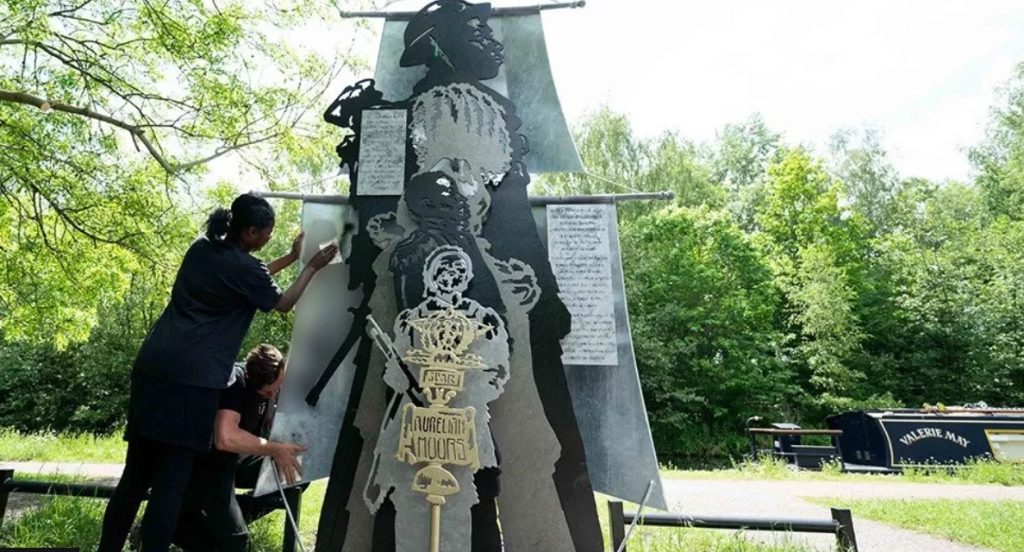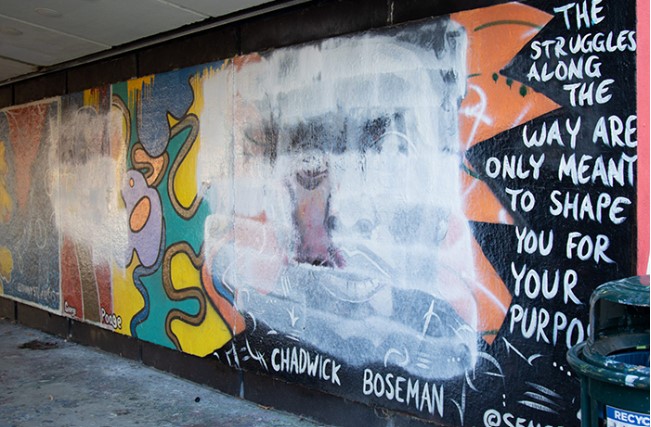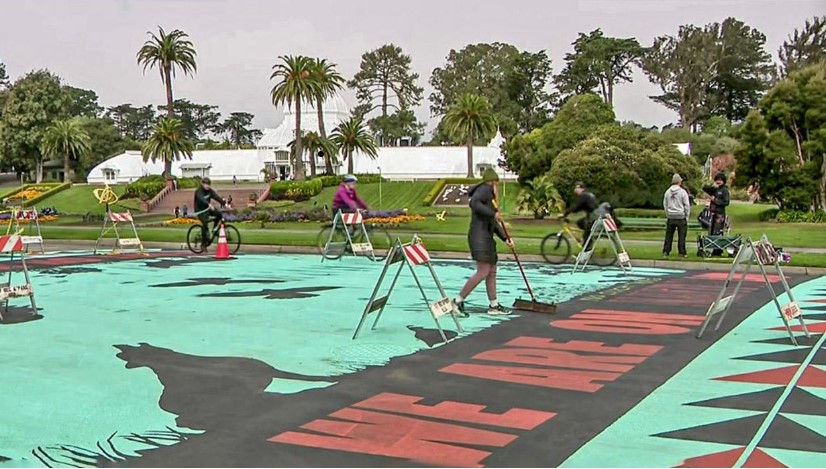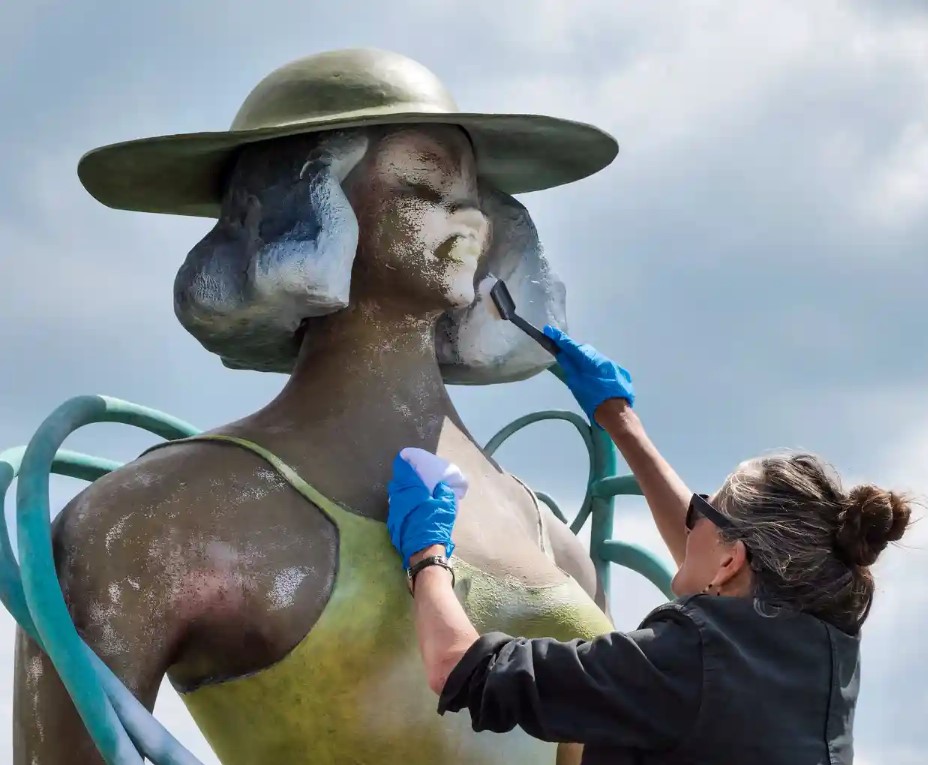Niveditha Ajay
The people of Bexhill-on-Sea woke up to a vandalised installation earlier this year. The piece, titled ‘Seated’, featured a bronze sculpture of a Black woman leisurely taking a seat that was spray painted white by the vandals. The artist, Tschabalala Self notes the nature of the act as being heavily motivated by a desire to remake the piece in their own image. The deeply disturbing act was countered by the community’s response to it, both through messages and action. Determined to take a stance against it, a group of 300 local volunteers helped restore the piece that was then unveiled to the public.
Self’s piece challenges both the notions of gender and race- asserting that the Black woman deserves to take up space unapologetically, in a diverse community. As The Guardian notes, Self’s pieces are an exploration of agency and leisure- perhaps the very reason the act was committed against it. The coloured body has always been a battlefield in discourse and art, both dissecting it across all planes. However, recently, acts of violence against coloured art have been rising, displaying a concerning trend of outrage against autonomy and expression by such artists. A similar case was that of ‘Black British History is British History’- a piece of public art designed by Luke Perry and Canaan Brown in Birmingham. Representing the richness of Black history, the installation contains references to Black soldiers, sailors, nurses and even Malcolm X. It was a target of racist graffiti that was cleaned, but left concerns. The artists refuse to allow the act to be seen as representative of larger social behaviour, holding that it was incited by a vocal minority.

Source: BBC News
The examples of violence against art that takes root in non-white cultures, do not end with the UK. Artist De’Joneiro Jones is one of many creators whose art has been allegedly targeted by the white supremacist group- the Patriot Front in St. Louis, U.S.A. His mural on a college campus was damaged and the campus is allegedly yet to respond positively to carrying out repairs. Jones also notes tokenism in the industry- and how Black artists find it harder to access the gallery space. The struggle to house their art in spaces of ‘high culture’ is not new, with Basquiat having fought for the same in street art in the 1970s and 1980s. The lack of progress, then, is systemic- entrenched in a deeply discriminatory arrangement.
Similar treatment extends to Brown and Native art, where the act of creating itself faces attempts at being quelled. Indigenous art too, has come under fire, with an overnight attack on a floor mural in the Bay Area. Initially reading “We are on native land”, the mural was coloured over in black and now said, “No such thing”. The purpose of the action is blatant- it aims to erase a history that does not serve the narrative of those in power. Unlike the previous instances, there lies deep insecurity and ignorance.

Source: SPL Center
The destruction of all the above-mentioned pieces through vandalism, graffiti, or painting overall signifies the fear that a small, but strong group holds. Activists have been clear in their declaration that such reactions are also a result of growing control in the hands of artists of colour. In other words, it is the very fact that their voices hold power and are listened to, that stirs violence- owing to the sensation of feeling threatened. The above pieces work to reclaim histories- to represent marginalisation while empowering the people who experienced it. The violence they are met with indicates a desperate attempt at withholding identity and authority. There is fear evoked when long-repressed voices are heard, and their stories acknowledged. The right to simply exist in a Black body that Self’s piece describes or Jones’ calling out of gatekeeping privilege in art spaces are actions with consequence- they are a refusal to simply adhere to the norm.
The rising racist and xenophobic sentiments in several developed nations unearth a long battle with cultural violence and the suppression of anything that is different from that of a heteronormative, white society. While this remains, artists refuse to back down. Self recalls her initial reaction to the vandalism as not wishing it to be covered up- instead revealing the damaged piece to avoid giving power to fear and anxiety. Similarly, the Birmingham art piece’s graffiti led to the artists commenting that the act was a result of ignorance and the piece, a contributor to the education that would run it out.

Source: CBS News
Also, an essential point to remember is the aftermath of such an incident- what does the community opt to do? What responses does the artist receive after? What constructive changes came about? These questions are best answered through the ‘Seated’ example- the local community’s effort converted the piece into a truly ‘public’ art piece. As Self notes, everyone who touched the piece is a permanent part of it. The resilient responses from the community matter- they chart future action; officials have guaranteed that Self’s piece would remain for the complete assigned duration and that they would not back down.
Violence is not a new response to expression- especially when done by a group previously silenced. While the assault on freedom and expression for artists of colour is nowhere close to being resolved it remains that they are reactions to an erosion in the power system. Their art is a political creation, affected by the context, time and climate it was created under- hence, they use the fluidity to construct new systems while questioning the old. This conflict, as old and evolved as it is, remains significant in the bringing up of new thoughts and fearless acts of creation that aim to break long-held silences.
Sources:
https://www.bbc.com/news/uk-england-birmingham-65713458





